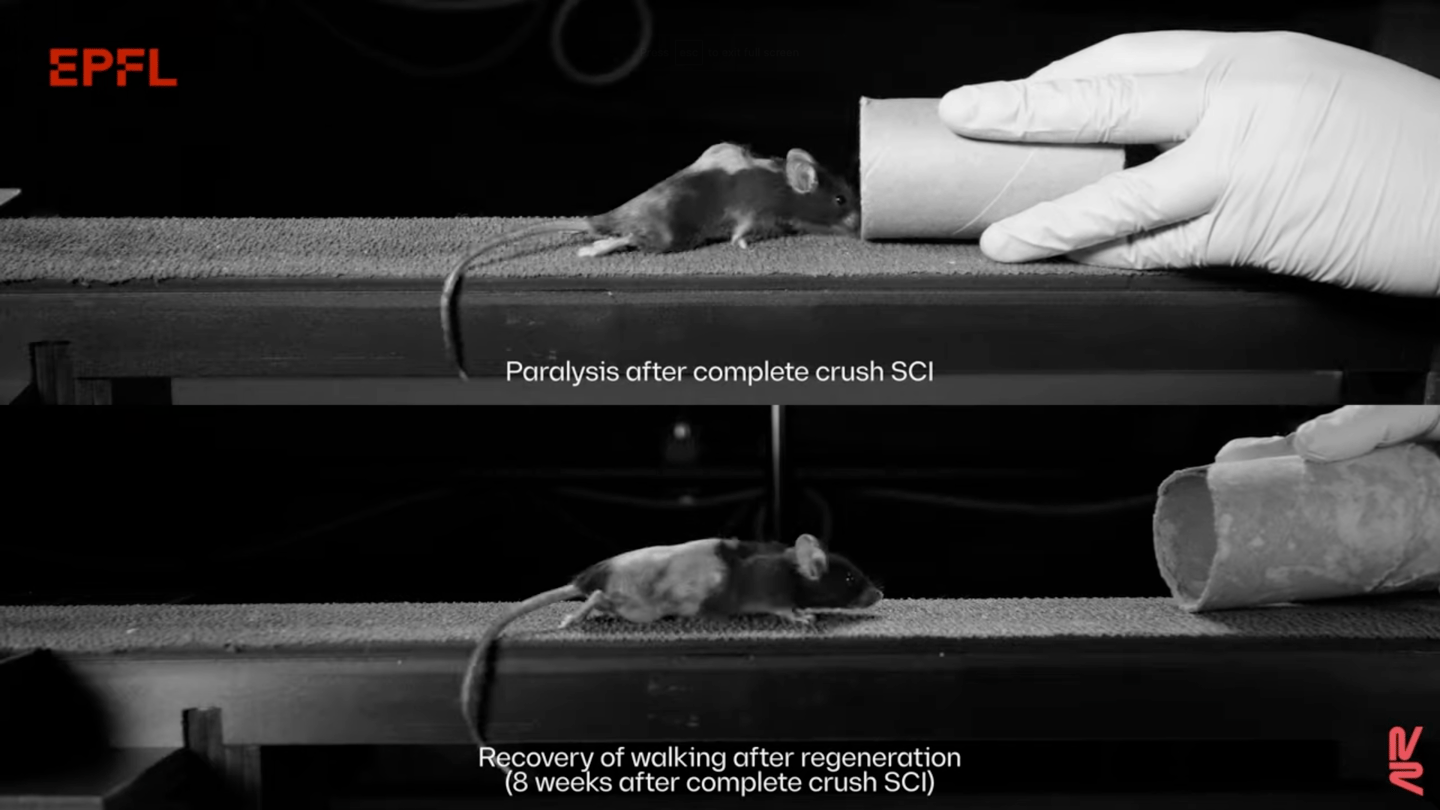A complete spinal cord injury results, tragically, in total paralysis of all limbs and muscles below the injury site. But now, scientists at EPFL have demonstrated in mice a new gene therapy that can regenerate nerves and restore the ability to walk.
The spinal cord is, to use an outdated tech term, the information super-highway of the body. Messages between the brain and every other part of the body travel up the thick bundle of nerves there at incredibly fast speeds. As such, damage to this conduit can be debilitating, leaving patients with no sensation or mobility in affected areas.
Unsurprisingly, finding new ways to repair these injuries is a key area of research, with recent studies finding some success using implants that bypass the injured area, nerve cell transplants, and proteins, molecules or compounds that help stimulate nerve regrowth. The EPFL team had previously managed to regenerate nerve fibers using gene therapy, but had limited success.
“Five years ago, we demonstrated that nerve fibers can be regenerated across anatomically complete spinal cord injuries,” said Mark Anderson, senior author of the study. “But we also realized this wasn’t enough to restore motor function, as the new fibers failed to connect to the right places on the other side of the lesion.”
To fix the issue, the researchers studied the natural repair processes that take place after a partial spinal cord injury. Using a technique called single-cell nuclear RNA sequencing, the team identified the specific axons that need to be repaired to restore motor function, and how they can find the right target on the other side of the injury.
From this analysis, the researchers developed a new gene therapy that works in a few ways at once to boost the reconnection of nerves. The therapy activates growth programs in certain neurons to regenerate the key nerve fibers, upregulates certain proteins that help the neurons grow through the damaged tissue, and added molecules that guide those regenerating nerves to their targets on the other side.

EPFL
In tests in mice with complete spinal cord injuries, the team found that the treated animals regained the ability to walk in a matter of months, ending up with a gait similar to those of mice that had recovered from a partial injury.
While there’s still plenty more work to be done before this kind of therapy could be applied to humans, the team says that it marks a key step towards that eventual goal.
“We expect that our gene therapy will act synergistically with our other procedures involving electrical stimulation of the spinal cord,” said Grégoire Courtine, senior author of the study. “We believe a complete solution for treating spinal cord injury will require both approaches – gene therapy to regrow relevant nerve fibers, and spinal stimulation to maximize the ability of both these fibers and the spinal cord below the injury to produce movement.”
The research was published in the journal Science. The team describes the work in the video below.
Regeneration across complete spinal cord injuries reverses paralysis in mice
Source: EPFL
Source of Article